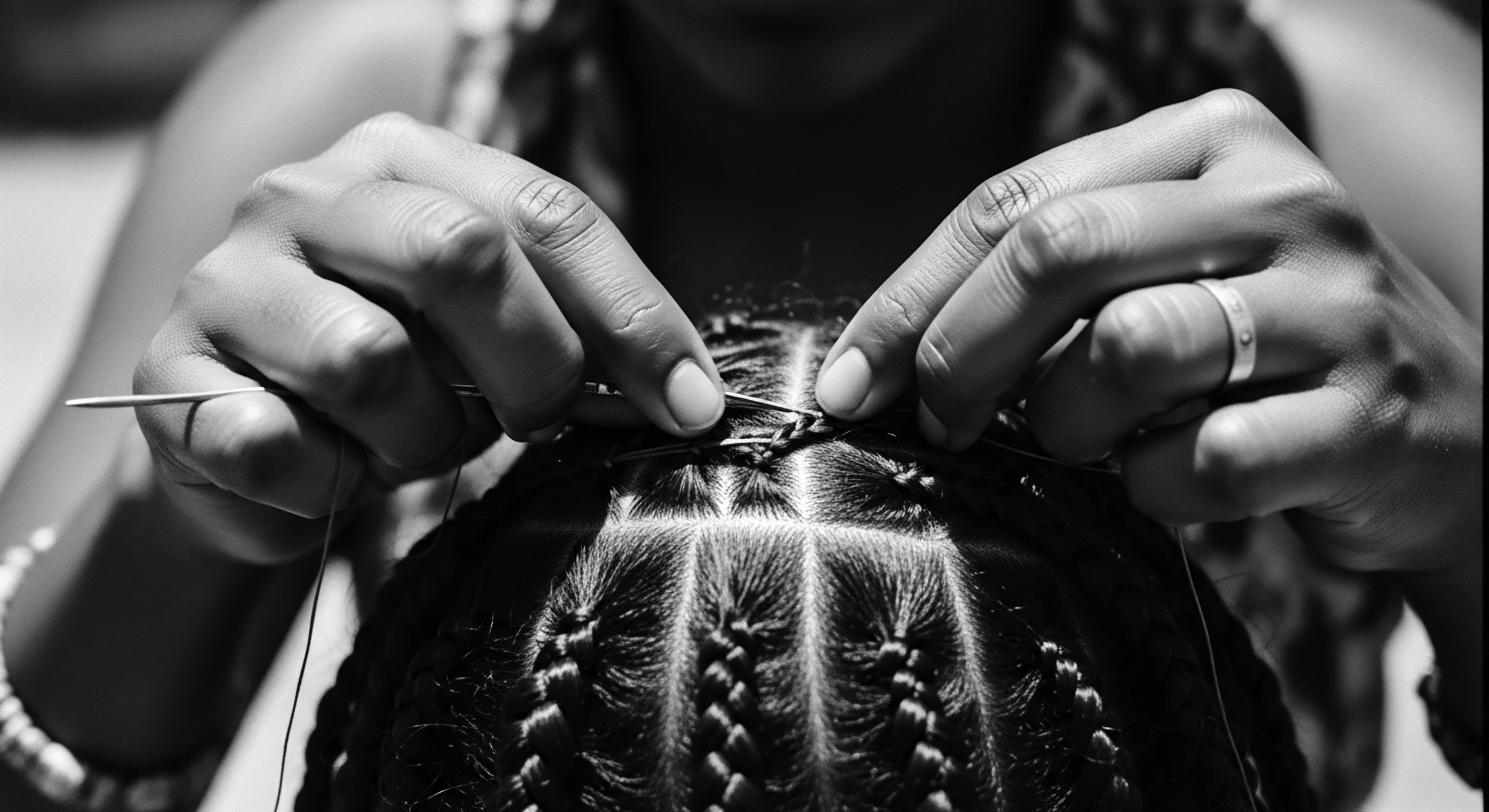
Fundamentals
The very notion of hair, particularly that which coils, kinks, and waves with a spirit all its own, finds its elemental blueprint within the microscopic helixes of our being. Among these, the TCHH Gene, a specific segment of our genetic inheritance, stands as a quiet yet profound architect of hair’s inherent character. This gene, known formally as Trichohyalin, holds instructions for producing a protein called trichohyalin, a vital building block within the inner root sheath of the hair follicle. This sheath, a temporary but crucial structure, guides the emerging hair shaft, shaping its cross-sectional geometry and, consequently, its curl pattern.
Understanding the designation of the TCHH gene requires an appreciation for its fundamental contribution to the very physical manifestation of hair. It provides a core component, a kind of internal scaffolding, that assists in the robust formation of the hair fiber. Without the precise instructions from this gene, the hair strand would not possess its characteristic resilience or its capacity for intricate coiling. This biological specification underscores the deep, ancient connections between our cellular makeup and the outward expressions of our textured hair, reflecting a heritage that extends beyond recorded history into the very dawn of human existence.
The TCHH gene is a fundamental genetic instruction set, shaping the very architecture of hair, particularly its curl pattern and resilience, echoing ancestral blueprints.
The interpretation of the TCHH gene’s function at this foundational level reveals a direct connection to the physical properties of hair. It is not merely about hair growth; it is about the structural integrity and the innate form that hair takes. For individuals with textured hair, this genetic designation speaks to the natural inclination of their strands to form spirals, zig-zags, and waves, patterns that have been celebrated and cared for across generations. The explication of its role at this basic level provides a gateway into appreciating the deeper cultural and historical narratives that have unfolded around these unique hair forms.
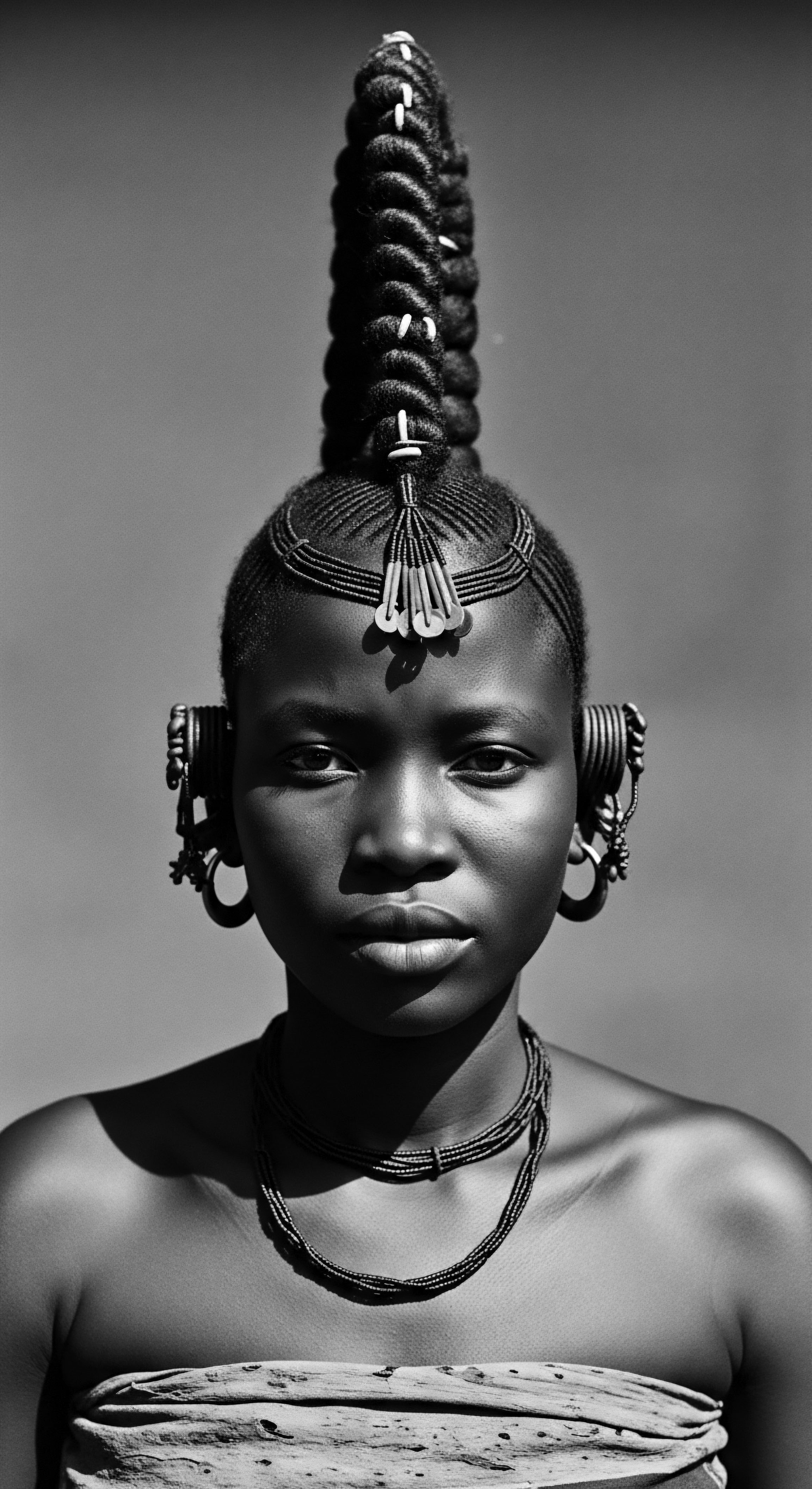
The Genesis of Curl ❉ Trichohyalin’s Role
Trichohyalin, the protein encoded by the TCHH gene, acts as a crucial structural element within the hair follicle. It contributes to the formation of the inner root sheath, which serves as a mold for the growing hair shaft. As the hair cell keratinizes and hardens, the shape imparted by this sheath becomes permanent, dictating whether the hair will emerge straight, wavy, curly, or coily. The delineation of this process reveals a sophisticated biological dance where genetic information translates into tangible physical traits.
- Trichohyalin ❉ A protein essential for the structural integrity of the hair follicle’s inner root sheath.
- Inner Root Sheath ❉ A temporary structure guiding the hair shaft’s shape as it grows.
- Hair Morphology ❉ The ultimate shape and curl pattern of the hair, directly influenced by the TCHH gene’s directives.
The designation of the TCHH gene, therefore, carries with it the implication of inherited hair diversity. It is a biological testament to the vast spectrum of human hair textures, particularly those prevalent in populations with African and mixed ancestries. The meaning of this gene transcends simple biology, extending into the realms of identity and shared heritage, as the distinct curl patterns it helps orchestrate have long been markers of lineage, community, and resilience. This fundamental understanding provides a steady ground upon which to build a richer, more nuanced appreciation of textured hair’s profound story.
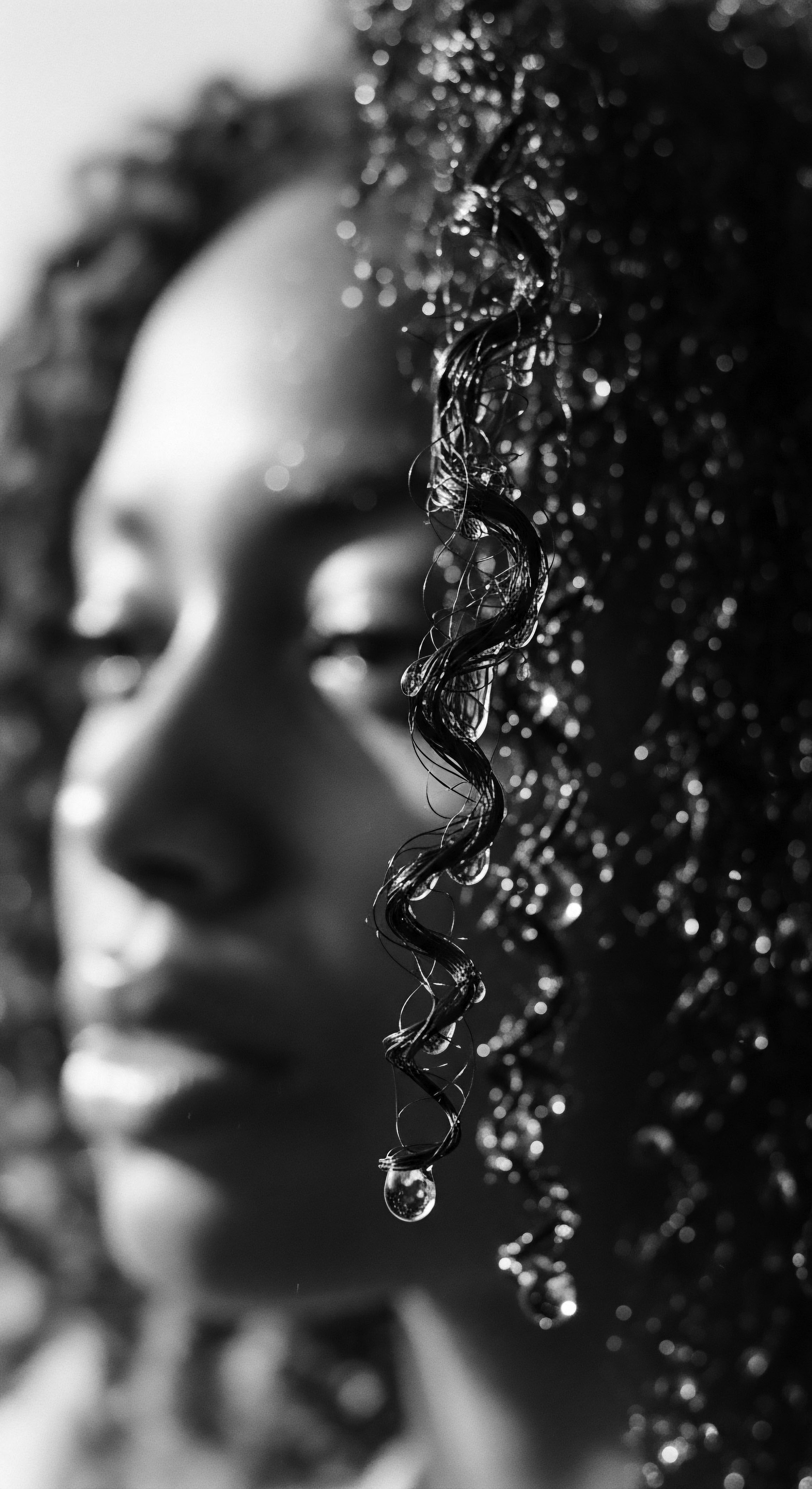
Intermediate
Moving beyond the elemental biological specification, an intermediate understanding of the TCHH Gene broadens its scope to encompass its significance in the spectrum of human hair diversity, particularly within the context of textured hair heritage. The TCHH gene, or Trichohyalin, does not operate in isolation; it interacts with a constellation of other genetic factors and environmental influences to manifest the rich variety of curl patterns observed across humanity. Its particular variants, or alleles, are recognized as key contributors to the distinct morphological features of Black and mixed-race hair. The meaning of these variations extends beyond mere genetic code, reaching into the lived experiences and cultural expressions of communities where textured hair is a predominant feature.
The explication of the TCHH gene at this level involves recognizing its direct impact on the elliptical or flattened cross-section of the hair shaft, a hallmark of curly and coily hair. While a perfectly round hair shaft tends to produce straight hair, an increasingly oval or ribbon-like cross-section encourages the hair to coil upon itself. The TCHH gene, through its role in the inner root sheath, is a primary influencer in shaping this critical geometry. This delineation provides a clearer picture of how a single genetic component contributes to the intricate physical characteristics that define textured hair, thereby shaping ancestral practices of care and adornment.
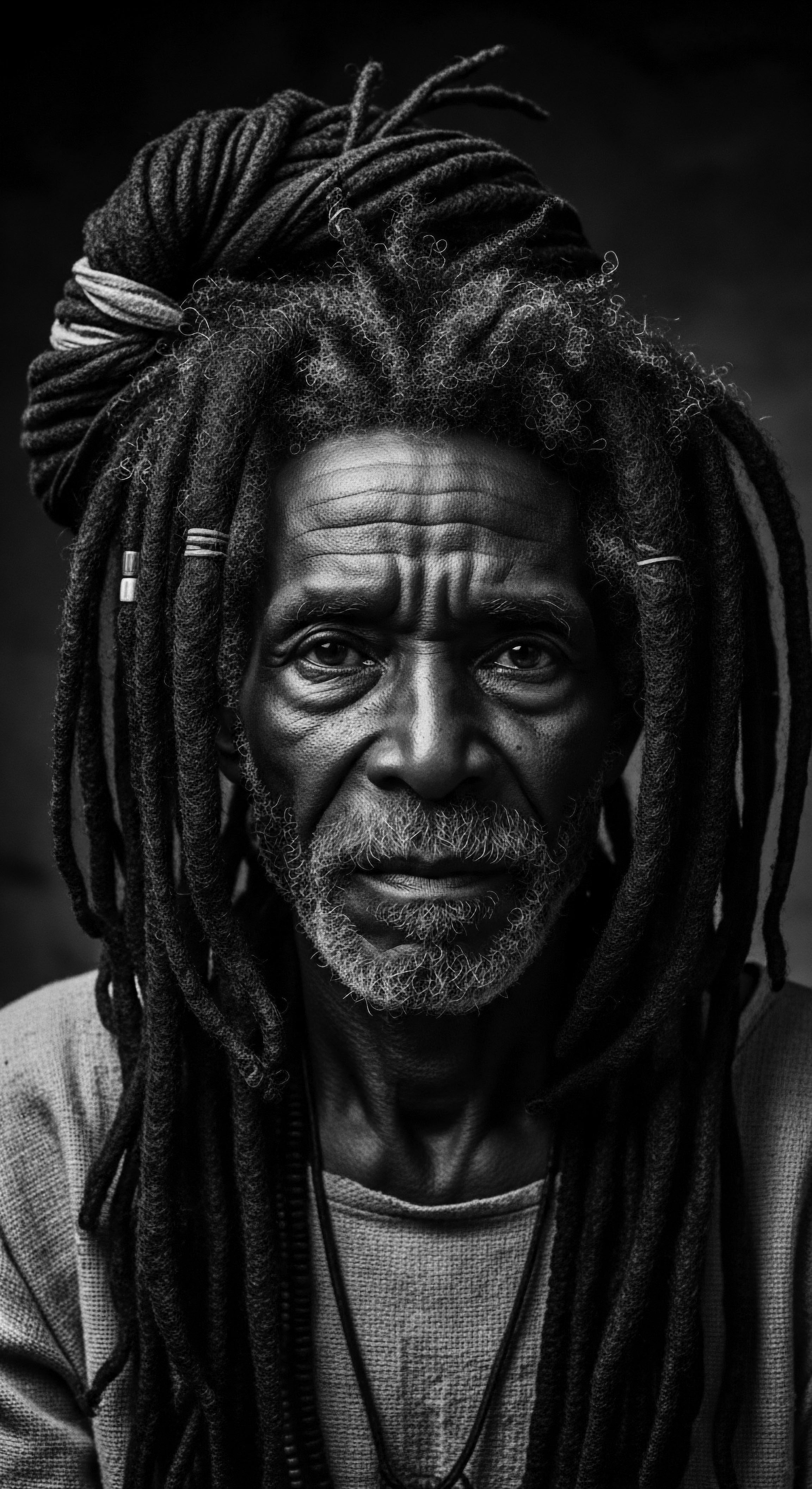
Genetic Markers of Ancestral Hair
Research into the genetic underpinnings of hair morphology has consistently identified specific variants of the TCHH gene as having a strong association with curl. For instance, studies examining populations of African descent have pointed to particular single nucleotide polymorphisms (SNPs) within the TCHH gene that are significantly more prevalent in individuals with tightly coiled or kinky hair. This genetic designation provides a scientific basis for understanding the inherited nature of textured hair, grounding ancestral knowledge in biological fact.
| TCHH Gene Variant rs11803731 (G allele) |
| Associated Hair Trait Increased likelihood of straight hair |
| Heritage Connection Less common in populations with predominantly coiled hair. |
| TCHH Gene Variant rs17824693 (C allele) |
| Associated Hair Trait Strong association with tight curl/kink |
| Heritage Connection Highly prevalent in Sub-Saharan African populations, reflecting ancestral hair forms. |
| TCHH Gene Variant rs11200014 (A allele) |
| Associated Hair Trait Contributes to wavy or looser curl patterns |
| Heritage Connection Observed in diverse populations, including those of mixed African and European ancestry. |
| TCHH Gene Variant These genetic variations within the TCHH gene offer insights into the inherited beauty of textured hair across global communities. |
The implication of these findings is profound for understanding textured hair heritage. For generations, the distinctiveness of hair patterns in Black and mixed-race communities was understood through observation and familial transmission. Now, scientific explication offers a molecular lens through which to appreciate this inheritance.
The TCHH gene’s variations speak to deep ancestral lineages, tracing pathways of human migration and adaptation across continents. The knowledge of these genetic underpinnings can empower individuals to connect with their hair on a deeper, more informed level, recognizing it not merely as a physical attribute but as a living archive of their lineage.
Specific variants of the TCHH gene are scientifically linked to distinct curl patterns, providing a biological foundation for understanding inherited textured hair within ancestral lineages.
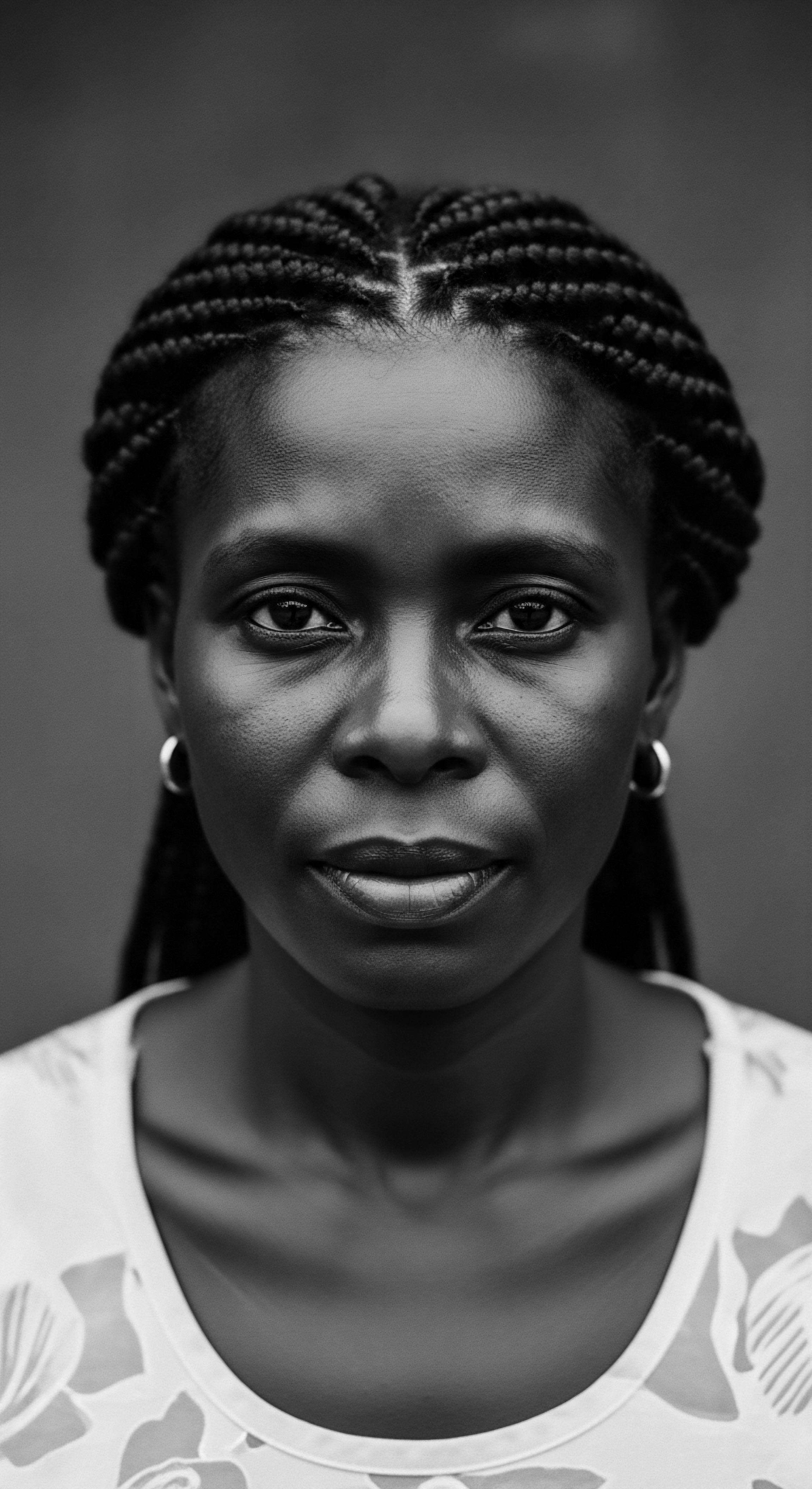
Traditional Practices and Genetic Resonance
The historical practices of hair care within textured hair communities, often dismissed as anecdotal, find intriguing resonance with modern scientific understanding of genes like TCHH. Ancestral wisdom, passed down through generations, developed sophisticated methods for nurturing and maintaining hair that possessed these specific structural properties. For instance, the traditional emphasis on moisture retention, gentle handling, and protective styling within many African and diasporic hair traditions aligns perfectly with the needs of hair shaped by the TCHH gene’s influence, which tends to be more prone to dryness and breakage due to its unique coiling structure.
Consider the widespread use of natural oils and butters—like shea butter from West Africa or coconut oil from various tropical regions—in ancestral hair care rituals. These emollients, applied to hair shaped by genes such as TCHH, provided a protective barrier, reducing moisture loss from the cuticle, which is often more open or raised in highly coiled hair. This ancient practice, a testament to keen observation and adaptation, served to fortify the hair fiber, preserving its integrity and natural beauty.
The meaning here is clear ❉ traditional practices were not arbitrary; they were finely tuned responses to the inherent qualities of textured hair, qualities profoundly influenced by genetic blueprints like the TCHH gene. The designation of these practices as “ancestral wisdom” gains further depth when viewed through this scientific lens.
The interplay between genetic predisposition and cultural practice offers a compelling narrative of adaptation and resilience. The TCHH gene provides the biological framework, and ancestral practices provide the nurturing environment, creating a harmonious system of care that has sustained textured hair for millennia. This intermediate understanding bridges the gap between the microscopic world of genetics and the rich, lived experiences of hair heritage.
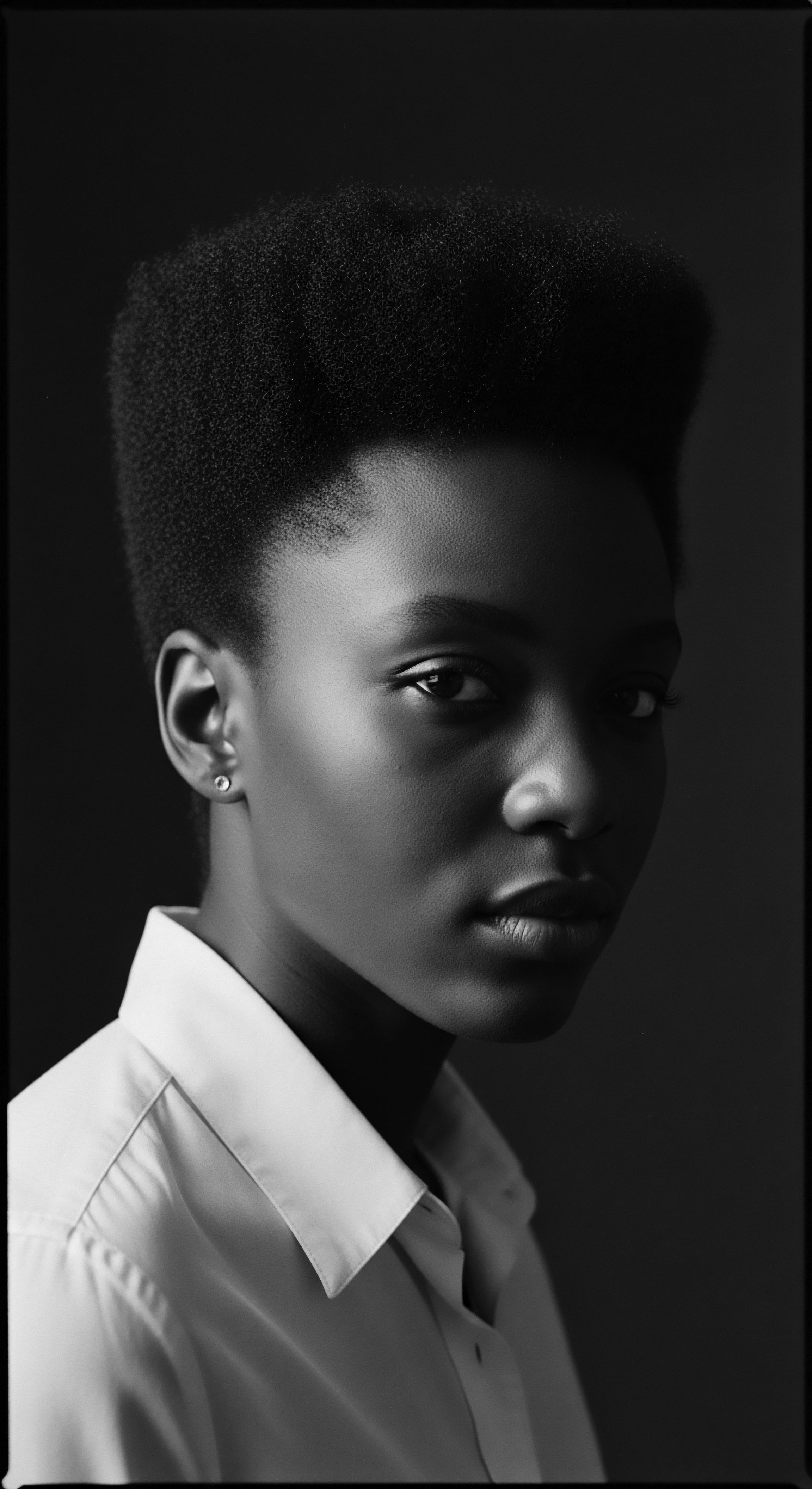
Academic
The academic designation of the TCHH Gene transcends its fundamental biological role, delving into its complex molecular mechanisms, its population genetics, and its profound implications for human phenotypic diversity, particularly concerning hair morphology within Black and mixed-race communities. From a scholarly perspective, the TCHH gene (Trichohyalin) is understood as a critical member of the S100 family of proteins, primarily expressed in the inner root sheath and medulla of the hair follicle, where it plays a structural role in cross-linking intermediate filaments. This precise molecular function contributes significantly to the mechanical properties and shape of the hair shaft, directly influencing the degree of curl, crimp, and wave. The elucidation of its function at this level necessitates an appreciation for the intricate protein-protein interactions and post-translational modifications that govern hair fiber assembly.
The academic meaning of the TCHH gene is further amplified by its significant contribution to quantitative trait loci (QTL) associated with hair morphology. Genetic studies, particularly genome-wide association studies (GWAS) conducted across diverse human populations, have consistently identified variants within the TCHH gene region as having some of the strongest statistical associations with hair curl and thickness. For instance, research has shown that specific single nucleotide polymorphisms (SNPs) within the TCHH gene exhibit pronounced allele frequency differences between populations with predominantly straight hair and those with highly coiled hair.
This observation underscores the gene’s deep evolutionary history and its role as a marker of ancestral origins and population substructure. The delineation of these genetic differences offers profound insights into human adaptation and the rich tapestry of global hair diversity.
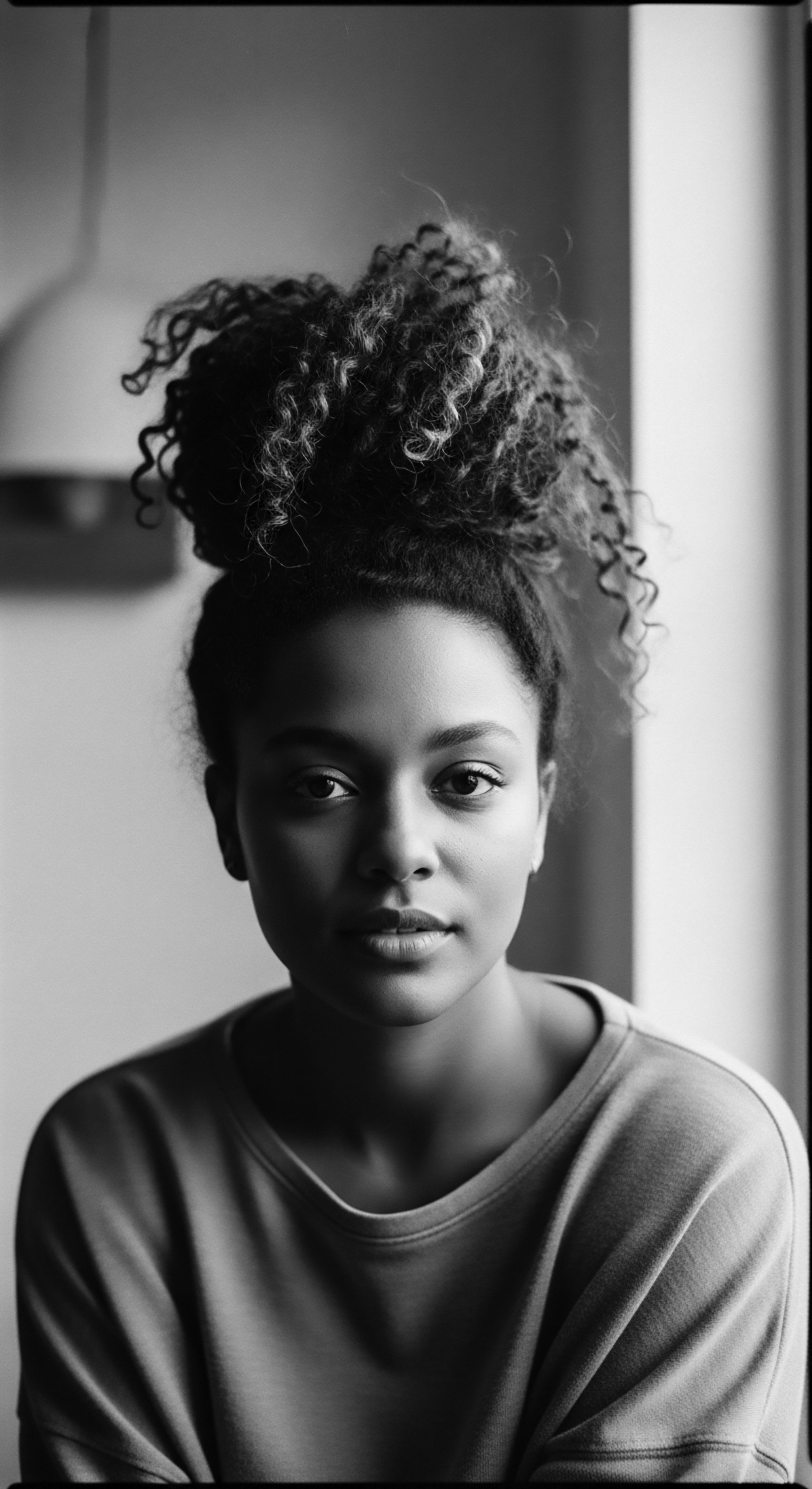
Molecular Architecture and Hair Coiling
At the molecular level, trichohyalin, the protein product of the TCHH gene, is characterized by its high content of glutamine and arginine residues, which facilitate its cross-linking with other structural proteins, notably keratins and keratin-associated proteins (KAPs). This cross-linking process is critical for the robust assembly of the hair fiber and the formation of the inner root sheath, which acts as a rigid mold for the growing hair. The spatial distribution and differential expression of trichohyalin within the inner root sheath are believed to contribute to the asymmetrical growth and keratinization of the hair shaft, a key determinant of its elliptical cross-section and subsequent coiling. A deeper interpretation of this process reveals how minute variations in protein structure or expression, guided by TCHH gene variants, can translate into macroscopic differences in hair texture.
- Protein Cross-Linking ❉ Trichohyalin’s ability to form stable bonds with keratins and KAPs, contributing to hair strength.
- Inner Root Sheath Asymmetry ❉ The differential development of the inner root sheath, influenced by TCHH, which dictates hair shaft shape.
- Mechanical Properties ❉ The gene’s contribution to the elasticity, tensile strength, and resilience of the hair fiber.
The academic understanding also considers the pleiotropic effects of the TCHH gene, where its influence might extend beyond hair morphology to other ectodermal derivatives, such as nails or skin, though its primary and most well-documented role remains in hair. This broader perspective enriches the designation of the TCHH gene, recognizing its place within a complex developmental network.
The TCHH gene’s academic definition highlights its molecular role in cross-linking hair proteins and its significant association with hair curl variation across human populations.

Population Genetics and Ancestral Lineages
From a population genetics standpoint, the TCHH gene serves as a compelling case study for understanding human phenotypic adaptation and the genetic legacy of diverse populations. Specific alleles of the TCHH gene, particularly those associated with highly coiled hair, are observed at very high frequencies in Sub-Saharan African populations. This genetic signature is thought to be a result of ancient selection pressures, potentially related to UV protection, thermoregulation, or pathogen resistance in equatorial environments. The prevalence of these alleles in diasporic Black communities is a direct genetic echo of these ancestral origins, providing a tangible link to a deep and complex heritage.
A significant study by Adhikari Et Al. (2016), published in Nature Communications, meticulously analyzed hair morphology and genetic variations across a broad spectrum of human populations, with a particular focus on the genetic basis of hair texture in African and mixed-ancestry individuals. Their findings powerfully illuminated the role of the TCHH gene, among others, in determining hair curl. They identified specific SNPs within the TCHH gene that account for a substantial proportion of the variance in hair curl in African populations, indicating a strong genetic influence.
This research provides rigorous empirical evidence, allowing for a precise academic delineation of the TCHH gene’s impact. The study’s meticulous genetic mapping affirmed that particular variants of TCHH are not merely correlated with, but are highly predictive of, distinct curl patterns, cementing its status as a primary determinant of textured hair. This scholarly work provides a scientific underpinning to the long-held cultural understanding of inherited hair traits within Black communities, offering a powerful validation of ancestral observations through the lens of modern genomics. The specific identification of the Rs17824693 C Allele within the TCHH gene, strongly associated with tight curl and kinky hair, offers a precise genetic marker.
This allele is found at significantly higher frequencies in individuals of Sub-Saharan African descent, representing a genetic signature that speaks volumes about the ancient origins and diversification of human hair forms. This scientific observation gives a profound academic meaning to the visible spectrum of textured hair, rooting it firmly in the ancient human story.
| Research Focus Molecular Biology of Hair |
| TCHH Gene Contribution Structural role in inner root sheath, influencing hair shaft asymmetry. |
| Implication for Heritage Explains the inherent coiling and unique structural needs of textured hair. |
| Research Focus Population Genetics |
| TCHH Gene Contribution Specific variants (e.g. rs17824693 C allele) highly prevalent in African populations. |
| Implication for Heritage Provides genetic evidence for the deep ancestral roots of textured hair patterns. |
| Research Focus Evolutionary Biology |
| TCHH Gene Contribution Potential adaptive advantages of coiled hair in equatorial climates. |
| Implication for Heritage Connects hair texture to ancient human migrations and environmental adaptations. |
| Research Focus Academic inquiry into the TCHH gene provides a rigorous framework for understanding the biological and evolutionary basis of textured hair heritage. |
The academic explication of the TCHH gene also extends to its role in forensic genetics and anthropological studies, where hair morphology, influenced by genes like TCHH, can provide clues about ancestral origins and population admixture. This scientific application underscores the gene’s utility as a marker of human diversity, allowing for a deeper understanding of human history and migration patterns. The academic meaning of the TCHH gene, therefore, is multifaceted ❉ it is a molecular architect, an evolutionary storyteller, and a genetic marker, all contributing to a comprehensive understanding of textured hair as a deeply rooted aspect of human heritage.
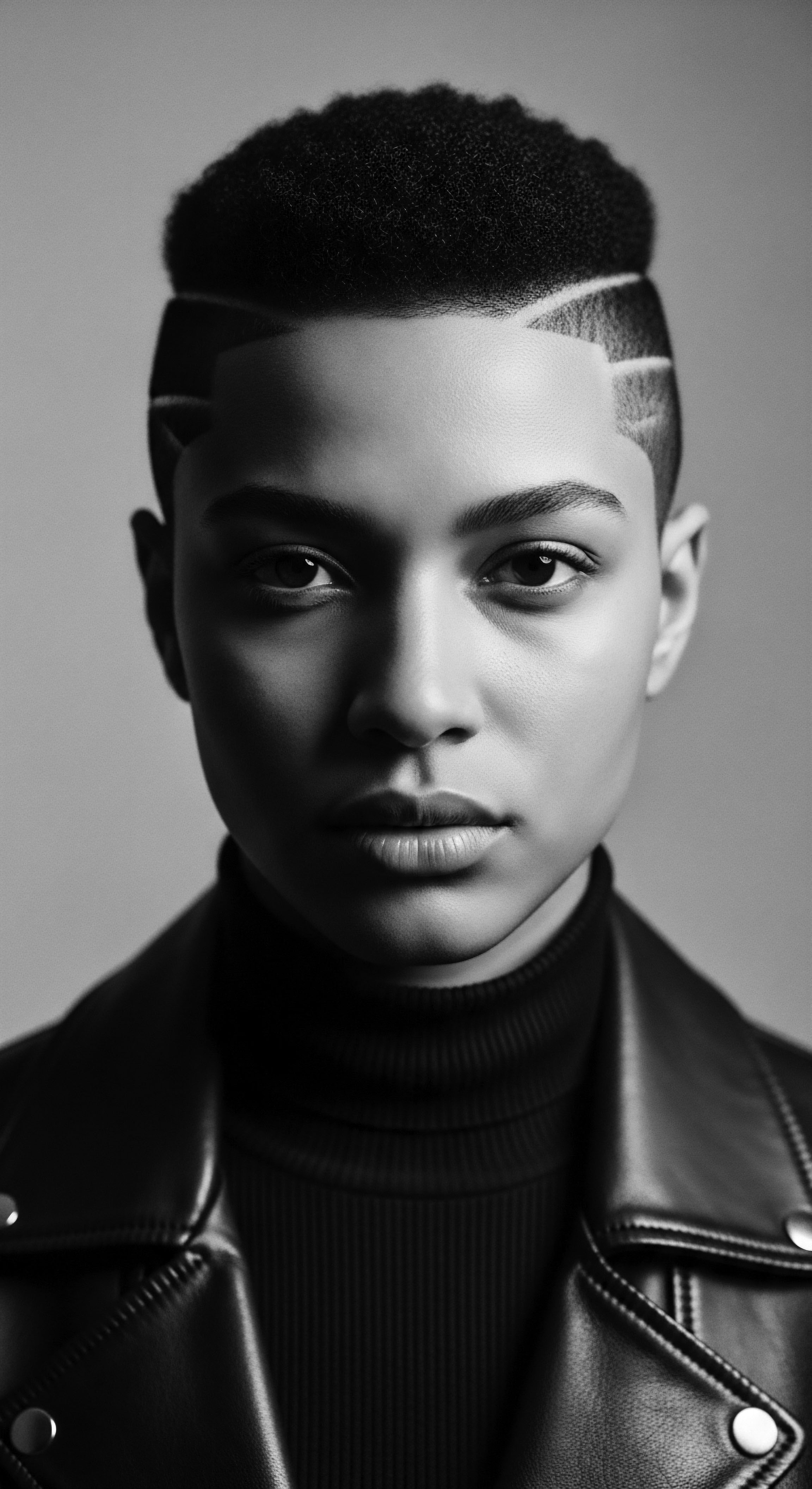
Interconnected Incidences and Future Directions
The academic discussion of the TCHH gene is not confined to its direct impact on hair morphology; it also intersects with broader fields such as dermatology, cosmetology, and even psychosocial studies. Understanding the precise genetic basis of textured hair, as provided by the TCHH gene’s specification, informs the development of targeted hair care products and practices that genuinely address the unique needs of these hair types. This knowledge can also counter historical biases and misrepresentations of textured hair, providing a scientific basis for its beauty and resilience. The academic definition of the TCHH gene provides a platform for advocating for culturally sensitive hair care and combating discrimination based on hair texture.
Moreover, the long-term consequences of understanding genes like TCHH extend to personalized hair care. As genetic sequencing becomes more accessible, individuals may gain precise insights into their unique hair predispositions, allowing for highly customized care regimens that honor their genetic heritage. This future direction represents a profound success insight ❉ the ability to move from generalized advice to highly specific, genetically informed care that celebrates the unique essence of each strand.
The academic exploration of the TCHH gene thus provides a robust foundation for both present understanding and future innovation, always with a deep respect for the inherited legacy of textured hair. The meaning of this gene will continue to evolve as scientific inquiry progresses, consistently affirming its centrality to the story of human hair diversity.
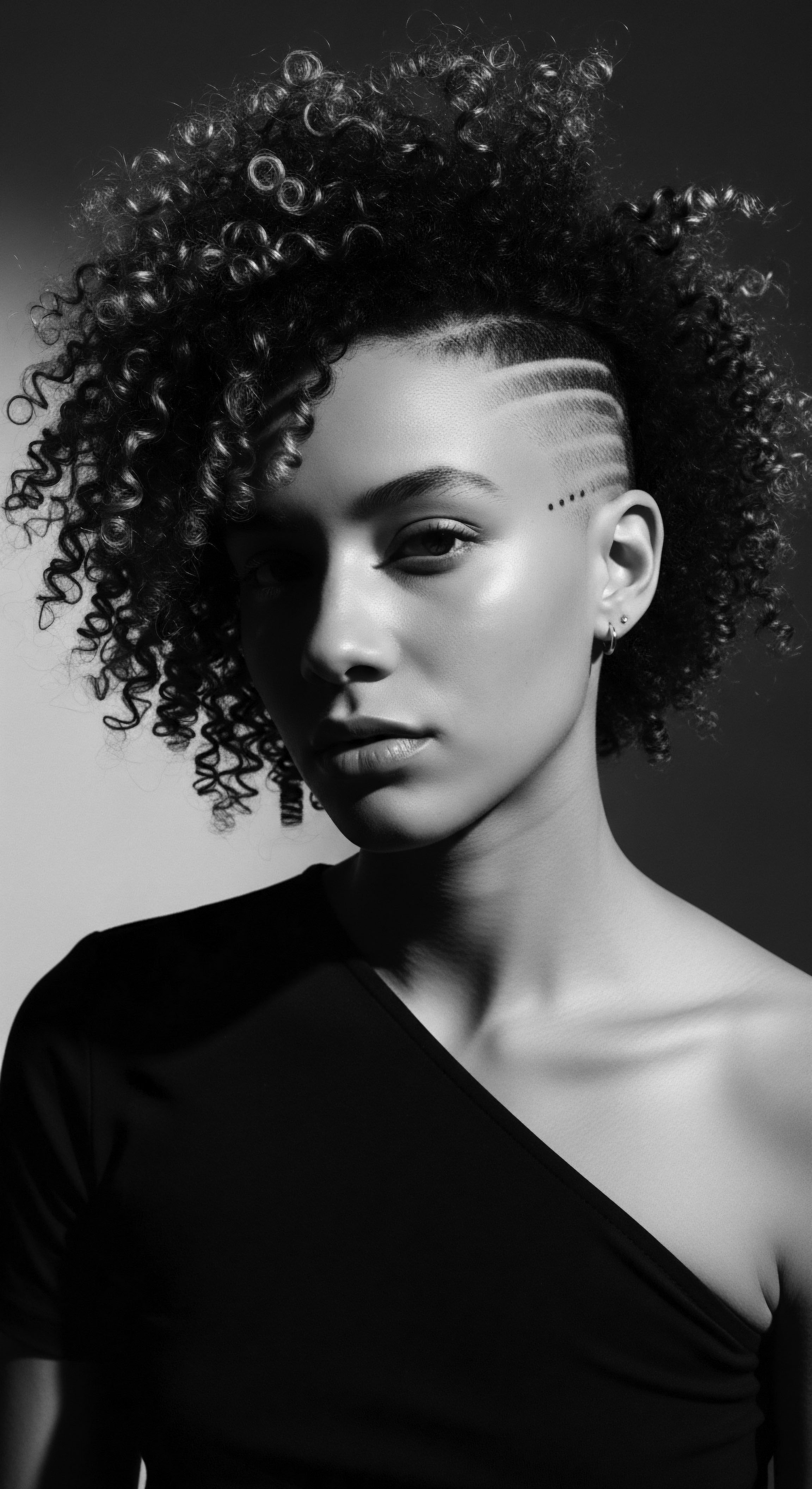
Reflection on the Heritage of TCHH Gene
The journey through the intricate world of the TCHH Gene reveals more than just biological mechanisms; it unveils a profound meditation on the enduring heritage of textured hair. From the quiet hum of its molecular origins to its resonant presence in the stories of Black and mixed-race communities, the TCHH gene stands as a testament to the wisdom embedded within our very cells. It reminds us that the spirals and coils that crown countless heads are not random occurrences, but rather a meticulously crafted inheritance, a legacy whispered through generations. This genetic blueprint, the TCHH gene, is a living thread connecting us to ancient landscapes, to the ingenuity of our ancestors who understood, through observation and practice, how to honor and nurture these unique hair forms.
The ‘Soul of a Strand’ ethos finds its deepest resonance in this understanding. Each curl, each kink, each wave is a repository of history, a physical manifestation of survival, adaptation, and beauty. The TCHH gene, in its silent work, underscores the inherent value and resilience of textured hair, challenging narratives that have historically sought to diminish its worth.
It compels us to look upon our hair not as something to be tamed or altered, but as a sacred extension of our ancestral lineage, deserving of reverence and knowledgeable care. The enduring significance of the TCHH gene lies not just in its scientific explanation, but in its capacity to deepen our connection to who we are and where we come from, empowering us to carry forward the rich traditions of textured hair heritage with pride and informed intention.
This genetic legacy invites a continuous dialogue between ancient wisdom and modern discovery, affirming that the knowledge of our forebears often held profound truths that contemporary science is only now beginning to articulate. The TCHH gene, therefore, becomes a beacon, illuminating the unbroken line of care, creativity, and identity that flows through the heart of textured hair traditions, forever reminding us of the magnificent story written within every single strand.
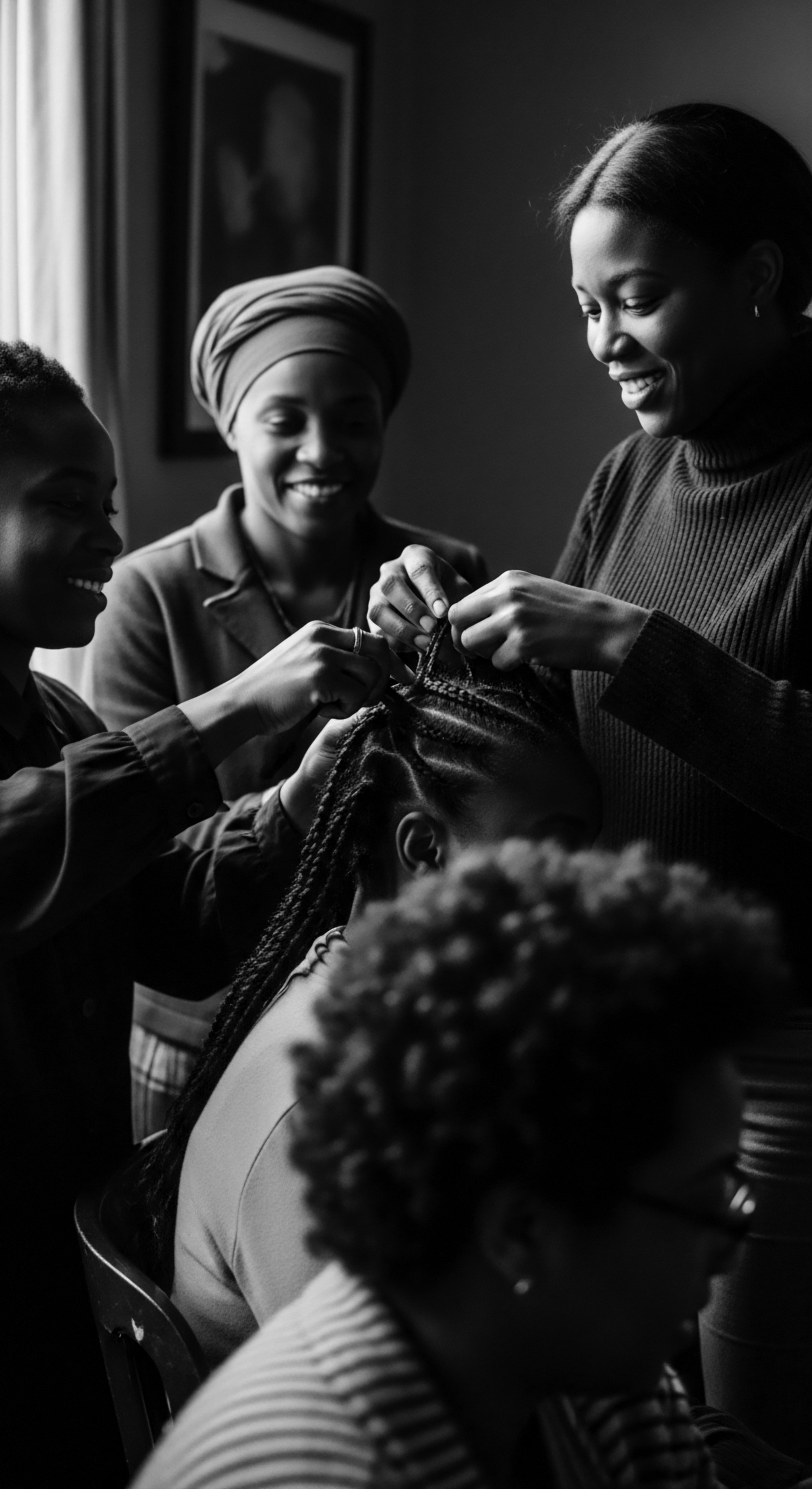
References
- Adhikari, K. Fontanil, T. Mendoza-Revilla, J. Sohail, M. Geschwind, L. Thompson, E. E. & Ruiz-Linares, A. (2016). A genome-wide association scan in admixed Latin Americans identifies loci influencing facial and scalp hair features. Nature Communications, 7(1), 10815.
- Gallego Romero, I. Racial, J. G. Ragsdale, A. P. Montinaro, F. Han, E. Schroeder, H. & Bustamante, C. D. (2012). Heritability of hair morphology and texture in a Nigerian population. Journal of Investigative Dermatology, 132(9), 2269-2276.
- Hardy, D. & Harmon, L. J. (2009). Hair morphology and its relation to human evolution. Journal of Human Evolution, 57(1), 1-13.
- Rogers, G. E. (2004). The structure and function of the hair follicle. International Journal of Dermatology, 43(1), 1-12.
- Sicheri, F. & Rogers, G. E. (2009). The structural biology of trichohyalin, a major protein of the hair follicle. Protein Science, 18(1), 1-10.
- Tobin, D. J. (2006). Biochemistry of hair shaft growth. Clinics in Dermatology, 24(2), 83-92.
- Chapman, S. (2009). Hair ❉ A Cultural History. Reaktion Books.
- Byrd, A. D. & Tharps, L. D. (2014). Hair Story ❉ Untangling the Roots of Black Hair in America. St. Martin’s Griffin.
- Blay, K. (2017). Sacred Woman ❉ A Guide to Healing the Feminine Body, Mind, and Spirit. HarperOne.
- Jackson, D. (2008). The African American Hair Book ❉ The Hair Care Guide for Black Women. Black Hair Books.
